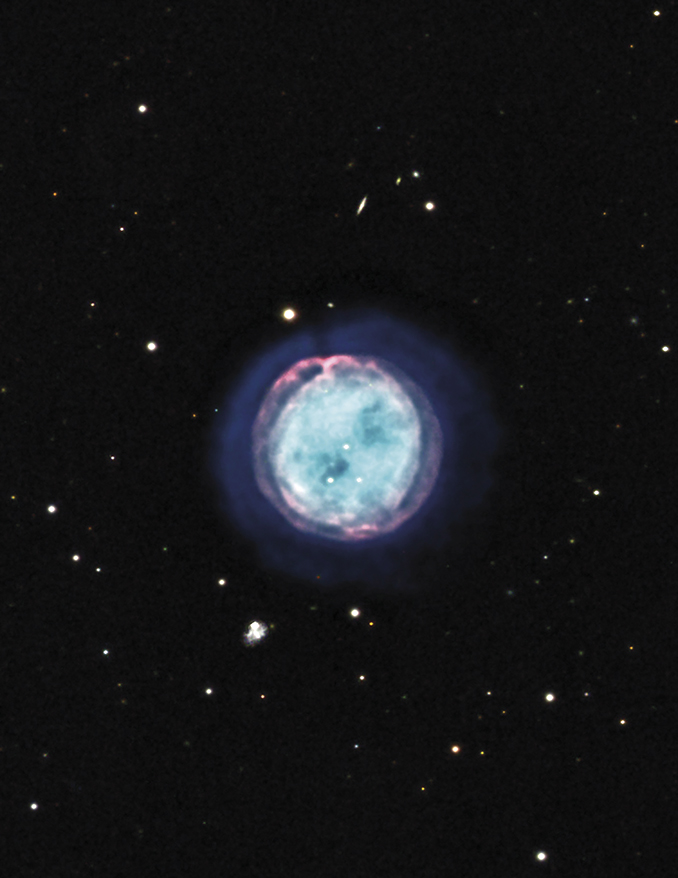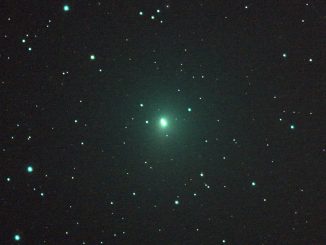
The March sky at observing prime time is not exactly overflowing with planetary nebulae that are well placed. However, the superb Owl Nebula, riding high in Ursa Major, the Great Bear, is, and the spooky Ghost of Jupiter, lying well south of the celestial equator in Hydra, the Water Snake, is an accessible though challenging object.

Swoop down on the Owl Nebula
Messier 97 (NGC 3587) is a great planetary nebula that’s one of just four elevated with Messier status, the others being the Ring Nebula (Messier 57) in Lyra, the Dumbbell Nebula (Messier 27) in Vulpecula and the Little Dumbbell (Messier 76) in Perseus.
Messier 97, universally known as the Owl Nebula, is located in Ursa Major, the Great Bear, a great constellation of the far northern sky whose territory is largely circumpolar (never sets) from UK shores. Once skies darken on March evenings, the Great Bear’s famous Plough (or Big Dipper) asterism of seven bright stars is climbing high in the east-north-east, culminating at around 11.30pm GMT.

Tracking down the Owl’s location is easy, given the rudimentary task of locating the Plough. Once found, zero-in on magnitude +2.3 Merak (beta [β] Ursae Majoris), the southern ‘pointer’ star marking the south-western corner of the ‘bowl’ of the Plough. Messier 97 handily sits just 2° to the south-east.
Sadly for binocular viewers, the Owl flies rather under the radar owing to its low surface brightness, its elusiveness (magnitude +9.9) rendering it beyond their grasp. It can be snared under a dark, transparent sky by a 80mm (three-inch) telescope and from suburban skies in a 100mm (four-inch) telescope fitted with an O-III filter, though life would be easier by employing a 150mm (six-inch) aperture. The Owl is a large planetary, spanning over 3’ at its fullest extent.
Messier 97 is known as the Owl owing to its most famous feature, a pair of spookily dark ‘eyes’ peering back at observers. Lord Rosse observed Messier 97 with his 72-inch Leviathan telescope in 1848, coining the nickname after sketching two darker patches within Messier 97’s overall nebulosity. Superior modern-day instrumentation means you’ll not require such a monstrous aperture to see the eyes, but it’s likely that at least a 250mm (10-inch) telescope will have to be pressed into service.

Spirit needed to glimpse the Ghost
NGC 3242, imaginatively nicknamed ‘the Ghost of Jupiter’, is located towards the western end of the sprawling constellation of Hydra. It can be located on a fine night through a moderate-aperture telescope, while imagers can capture a good-looking object with a flattened disc that is reminiscent of a small Jupiter.
The Ghost of Jupiter is easy to locate, lying under 2° south of mu (μ) Hydrae, though you’ll need a 100–150mm (four- to six-inch) telescope to spot its ninth-magnitude disc which spans 30” to 40”. It’s southern declination of 18° 45’ is less than ideal from mid-northern latitudes, which includes the UK. From the south of England it peaks at an altitude of around 20° at about 10.30pm GMT, tracing a shallow arc across the southern sky; try to catch it for an hour or so either side of culmination.
Once you’ve found the Ghost, try adding a UHC or O-III filter while ramping up the power as much as the seeing allows; you may see a disc within a disc, an inner, brighter zone, where the eleventh-magnitude white-dwarf remnant resides. The nebula glows with a faint but unmistakable blue-green hue.



